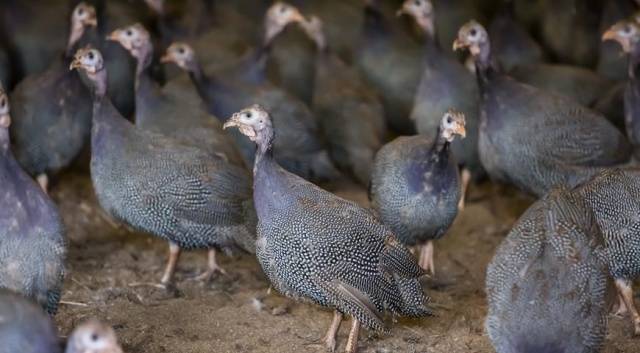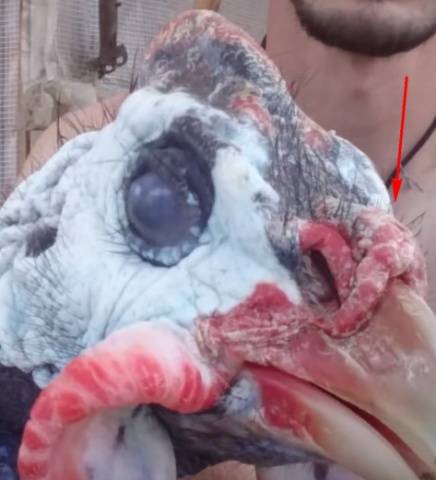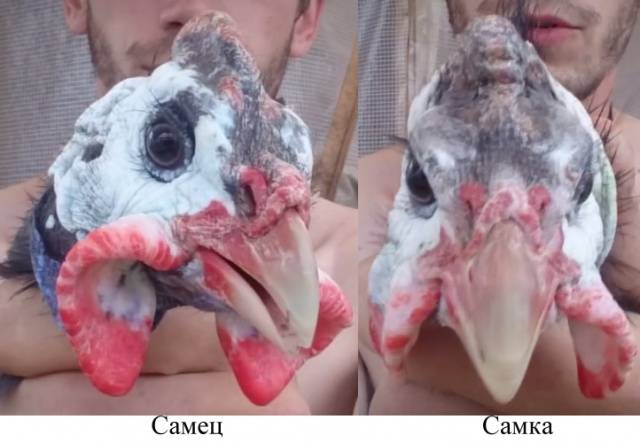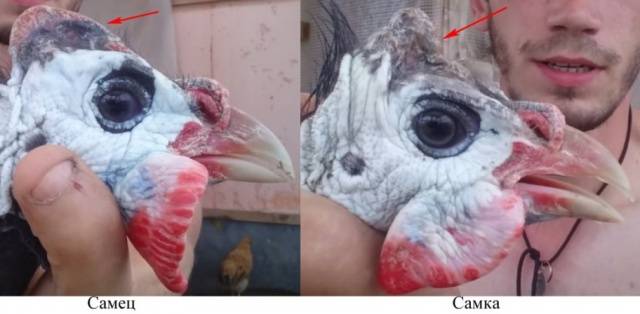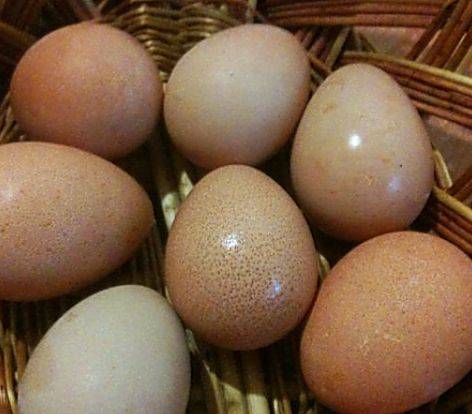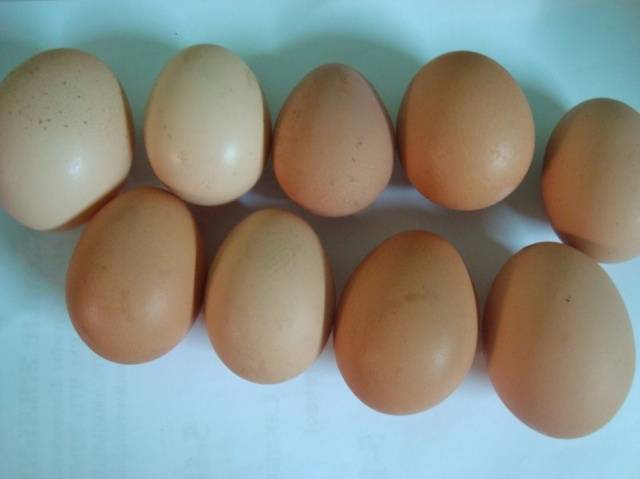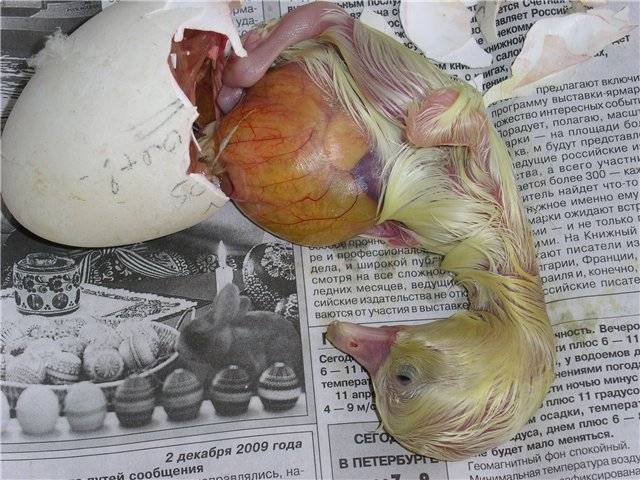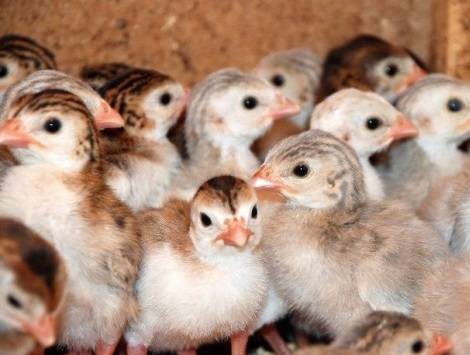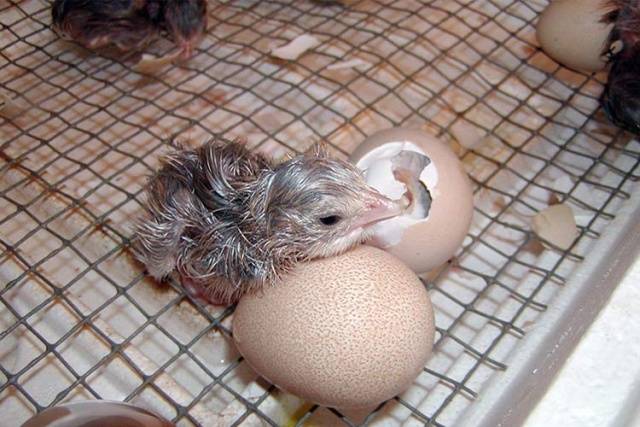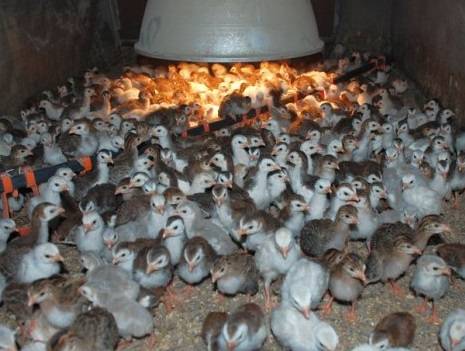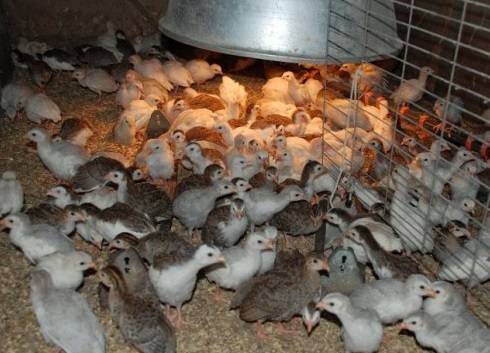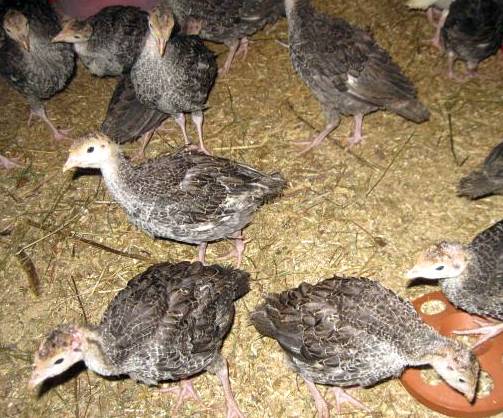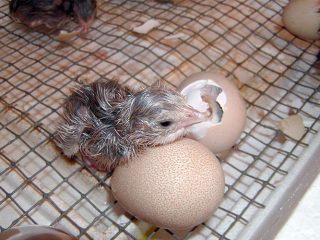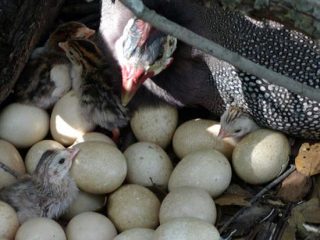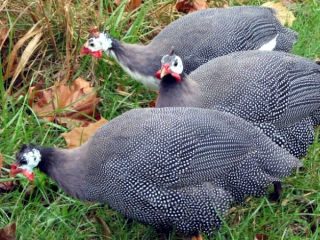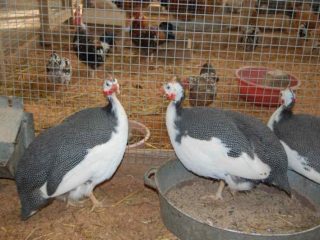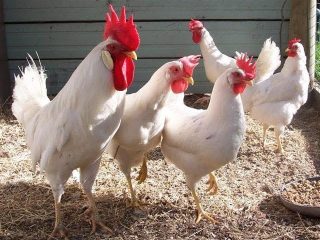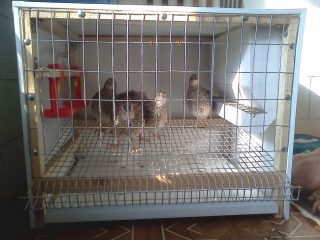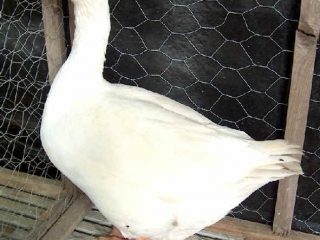Content
Poultry with meat similar to game, popular in Europe, is beginning to interest Russian poultry farmers today. It's about guinea fowl: a bird with a beautiful interesting plumage and a head "for an amateur". To some, this head will seem scary, to some beautiful.
True, Russian poultry farmers do not know one European secret: practical Europeans prefer to grow guinea fowls on special farms located far from housing. And the point is not that guinea fowls cause any problems when keeping them on a personal backyard. It's just that the birds are very noisy and eccentric. Guinea fowls raise a cry at the slightest provocation, and even try to fly. Farm workers enter the room with the guinea fowl, after putting on earplugs.
But there is a plus in such loudness. In terms of vigilance and the level of screaming, the guinea fowl surpass even the legendary geese that saved Rome. No one will pass by the guinea fowl unnoticed, and any intruder entering the house will be immediately betrayed by these birds.
At the same time, breeding guinea fowls at home for beginners is not as difficult as breeding geese popular in Russia. Fertility in guinea fowls is higher, and the incubation of eggs is similar to the incubation of chicken eggs. There are differences, but small, so many guinea fowl owners, without bothering with setting up incubators, use the same mode as for hatching chickens. In a slightly smaller number, but the Caesars are also displayed in this mode. Often it is easier and less costly than trying to comply with the "native" regime, especially if chicken eggs are also laid along with the caesarines.
Breeding and keeping of guinea fowls on a private backyard
Novice poultry farmers may be afraid to have a guinea fowl, because they do not know what kind of bird it is.
The common guinea fowl, the wild ancestor of the domestic one, is a shy inhabitant of arid regions, carrying a small number of eggs and breeding offspring in secluded places. Birds live in flocks.
Domestic guinea fowl from the point of view of economic characteristics is almost the same as wild. She began to lay more eggs (60 - 80 per year), but due to the absence of quiet secluded bushes of the bush, she does not burn with the desire to incubate them. In fact, the bird is just scared. If it is possible to provide the guinea fowl with conditions similar to those in the wild, she will hatch the chicks herself, which successfully proves guinea fowl in the photowith the ability to hatch chicks in a quiet place.
Guinea fowls did not abandon their wild habit of walking everywhere only in a flock. Sometimes it is very interesting to watch a dozen birds return from a day's "hike". Yes, they, even being free and able to fly, will not go anywhere and will return in the evening. Of course, unless someone catches them while walking. Even chicks keep together all the time.
The main thing is to catch the molted guinea fowl in time during molting and resume winding. The second way to prevent flying birds from flying away is to cut the tendons at the wing joint. But this operation must be performed by a veterinarian.
If it is not possible to provide the birds with life in a spacious aviary, guinea fowls will have to be bred using an incubator.
To obtain an incubator, not a food egg, one caesar is required for 5 - 6 females. But with determining the sex of guinea fowls, the owners have certain problems.Sexual dimorphism of guinea fowls is poorly expressed and it is easy to make a mistake.
How to distinguish a female from a male guinea fowl
It is usually recommended to distinguish already sexually mature birds by earrings and a growth on the head.
The bump on the beak of both sexes usually looks the same.
Earrings are very different.
In theory. In practice, there may be practically no difference. But in the caesar, earrings are often curved and sticking out to the sides, while in the guinea fowl they are smaller, straight and directed downward.
The second difference: on the ridge on the head.
In the male, the crest is usually smoother and smoother towards the tail. In a guinea fowl, the crest resembles, rather, a volcanic cone.
These birds also have different cries. The Caesar is "bursting", but the cry of the Guinea fowl must be heard.
However, other guinea fowl owners believe that attempts to determine the sex by the shape of the head are ineffective, since often in birds of this species, the secondary sexual characteristics are very similar. In size, the guinea fowl also differ little from each other, and there is always a risk of mistaking an overweight guinea fowl for a male. Therefore, experienced guinea fowl breeders prefer to determine the sex of birds based on the results of examining the cloaca.
Determining the sex of guinea fowls
Egg collection and incubation
Not intending to incubate eggs, guinea fowls can scatter them anywhere within their range, so the owner will either have to limit the walking area of guinea fowls during the laying season, or master the profession of a search engine. Since no one wants to be a search engine, they usually limit the walking of guinea fowls.
This is where other problems begin. Guinea fowls are very careless about their eggs and can easily bury them in litter or stain them in droppings. With this treatment from the side of the birds, guinea fowl eggs do not shine with purity.
The rules for laying eggs in an incubator require washing dirty eggs before incubation and disinfecting them with a solution of potassium permanganate. But when washing, it is easy to wipe off the protective film that prevents bacteria from entering the eggs. The incubator, no matter how disinfected before each laying of eggs, will not be 100% cleaned out. And bacteria are also present in the air.
Therefore, it is possible to decide whether or not to wash the eggs experimentally, by removing two batches of guinea fowls from clean and dirty eggs. But in any case, if it is possible to plant a brood hen even on dirty eggs, the hatchability percentage will be higher, since the bird can provide the care and temperature conditions necessary for the eggs. An incubator, even the most perfect one, is not capable of such fine adjustment.
Medium-sized eggs are laid for incubation. From small eggs, an underdeveloped chick is most likely born, and large eggs may turn out to be with a double yolk. The eggs should be regular in shape and brownish in color. Usually, guinea fowl eggs are cream, but the color of the shell can largely depend on the individual characteristics of the bird.
The incubation of guinea fowl eggs lasts longer than chicken eggs, but less than duck or turkey eggs. It should be borne in mind that incubation data can often deviate in one direction or another. This largely depends on the temperature in the incubator. If it is too tall, the chicks will hatch earlier, but there will be many non-viable ones among them. At a lower temperature, incubation will last longer, but chicks will come out fully developed. Of course, the maximum and minimum temperatures should not deviate too much from the recommended ones. This is usually ± 0.5 ° C.
You need to turn guinea fowl eggs at least 4 times a day. The incubator, depending on the model, either turns the eggs on its own, or it can be programmed for a certain number of turns, or the eggs must be turned manually in it
In underdeveloped chicks, when hatching, a significant part of the yolk remains in the egg, which either dries up or has time to be drawn into the abdomen.
You can also experiment and try to breed different birds in the same incubator. For this method, two incubators are needed, in one of which the main incubation process will take place, and in the second, at a lower temperature, those chicks will hatch for whom the time has come.
Joint incubation of eggs of different types of poultry
In order not to get confused, which eggs were placed in the incubator when, they write the date on them.
Requirements for the maintenance and care of the princes
After hatching, the chicks are transferred to a brooder. You can leave the chicks in the incubator until they dry, you can immediately transfer them to the brooder. Usually the chicks are left to dry completely.
After being placed in a brooder, the care of the Caesars is carried out in the same way as for chickens. There is not much difference between these two types of birds, so anything that is suitable for a chicken is also suitable for a guinea fowl.
At first, the chicks are kept at a rather high temperature of at least 30 ° C. However, this is not a dogma and it is better to focus on the behavior of the chicks themselves, especially if there is no thermometer. If the chicks are cold, they huddle together, squeak and try to get into the middle of the flock. If the chicks calmly roam the brooder, periodically trying to peck at something, then they are comfortable at this temperature. Worse, if the chicks scattered in the corners, lie and breathe heavily. They are overheating. A frozen chick is easy enough to warm up. Cooling quickly without dipping in water is very difficult. And when swimming in water, the chick will get hypothermia.
When hatching in an incubator, chicks often have problems such as abnormal development of the limbs. Chicks are often born with legs in different directions. You can try to tie the paws with electrical tape, but with a high degree of probability, such a chick will still die.
Maintenance and care of adult guinea fowls
Like chickens, the chickens fledge and grow very quickly. Grown chicks are transferred to an aviary, and almost adult birds are released into a common flock. It must be remembered that they begin to distinguish between birds by sex only when they mature, and you need to immediately decide which part of the herd to send for slaughter and which part to leave for breeding. If the young are not slaughtered at 3 months, the birds can become fat. The French broiler breed is especially good at gaining fat.
These birds do not require any special care. A poultry house for guinea fowls is organized in the same way as for chickens. Both of these species of birds love to sleep on roosts, so a place to spend the night must be equipped in the poultry house.
Guinea fowls are not particularly afraid of winters. The main thing is that there is food, deep bedding and protection from the cold wind.
Keeping guinea fowl. Indoor aviary.
In Europe, they love the meat of guinea fowl, and most importantly, they know how to cook it, since the meat of these birds, if improperly cooked, will be tough, although tasty. But today it is already easy to find recipes for cooking guinea fowl in France or Italy, so guinea fowls can diversify the dishes on the table of Russians.

